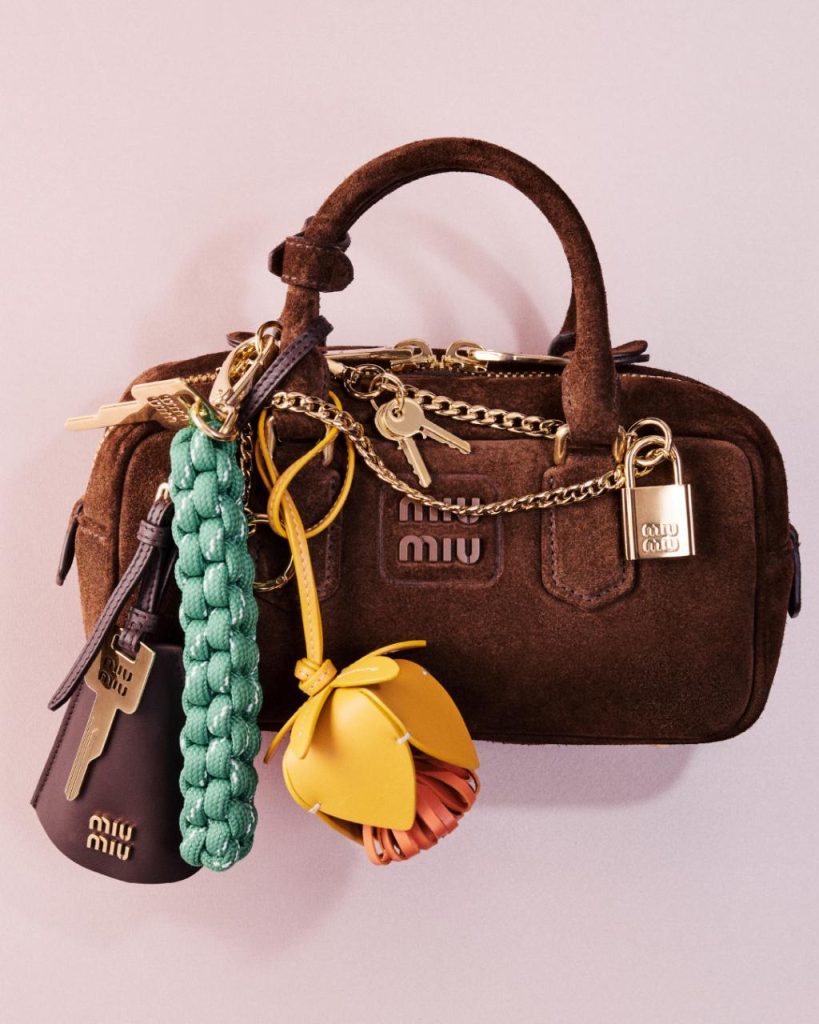Millennials are expressing outrage over designer brand Miu Miu’s decision to sell gimp keychains for $480, a significant increase from the cost of making these arts and crafts creations themselves. Gimp lanyards, known by various names, were popular among kids in the early 2000s, who spent time weaving colorful plastic strands to create various accessories. However, Miu Miu’s high-priced version of these keychains has sparked criticism online from individuals who feel the commercialization of childhood pastimes is excessive.
Despite the backlash, Miu Miu’s luxurious gimp keychains have sold out, highlighting the demand for nostalgic items from the Y2K era. The designer brand has described the keychains as playful and distinctive, offering them in either leather or fabric. While some millennials are critical of the high price tag for these trinkets, others have appreciated Miu Miu’s modern take on a beloved childhood craft, with one fan expressing gratitude for unlocking a core memory with the keychain.
The trend of reviving Y2K-era items has been on the rise, with products such as Tamagotchis, digital cameras, and cassette tapes making a comeback among younger generations like Gen Z. These nostalgic items have found new popularity among individuals who grew up with them, demonstrating the cyclical nature of trends and consumer preferences. Miu Miu’s decision to create a luxury version of gimp keychains taps into this nostalgia, appealing to consumers who value the sentimental connections they have with these items from their past.
Although the price of Miu Miu’s gimp keychains has caused controversy, the brand’s ability to tap into childhood memories and transform them into high-fashion items has resonated with some consumers. The luxury market’s focus on incorporating nostalgia into its designs reflects broader consumer preferences for products that evoke sentimental value and personal connections. By reviving Y2K-era trends and crafting them into modern, upscale items, brands like Miu Miu are able to appeal to a diverse audience, drawing both criticism and appreciation for their innovative approach in blending past and present.
As the popularity of nostalgic items continues to rise, brands like Miu Miu are adapting by creating luxury versions of once-affordable childhood crafts. This trend highlights the enduring appeal of Y2K-era trends and the desire for consumers to reconnect with their past through material objects. The debate around the high prices of these items showcases the tension between the commercialization of nostalgia and the emotional value placed on these artifacts from childhood. Ultimately, brands that are able to strike a balance between honoring the past and innovating for the future are likely to succeed in capturing the attention and loyalty of consumers across different generations.















